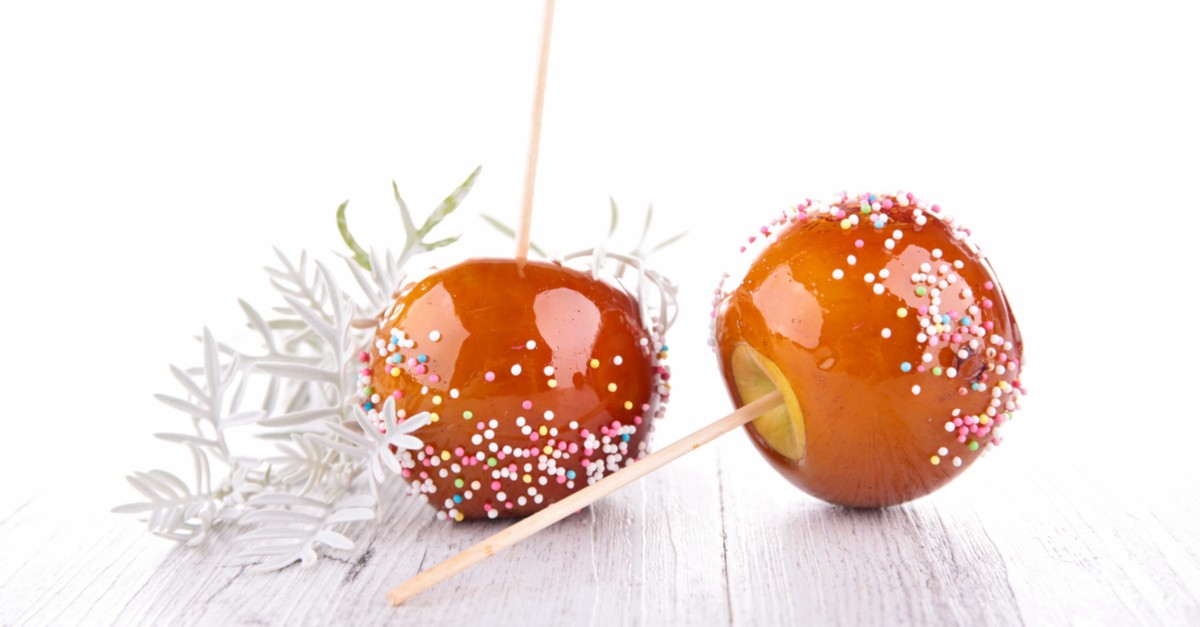The Struggle
There is nothing more satisfying than a perfectly made caramel apple or candy apple. It’s a signal of the fall season and also a great treat. Plus its an apple, and apples are healthy…. right? But making caramel apples can be difficult if you don’t know all the little tricks to make sugar work in your favor. You could spend money on a lot of caramel candies that you need to unwrap, or that weird sheet of caramel that you wrap around the apple with your hands. When you make a caramel apple at home you are able to customize the flavor to your liking. So I wasn’t surprised to see this question come across my desk (aka prep table)
“Why does my caramel run off of my caramel apples?”
Sugar is Finicky
The first thing you should do is pick the type of apple. The apple needs to be a firm apple like a gala apple or a granny smith. These types of apples work perfectly fine, but If you happen to live in a region that has apple orchards I suggest seeking out mutsu apples. Mutsu apples are large, firm, and tart but have a honey-like sweetness as well. I find these make the best caramel apples. We understand that this isn’t realistic for everyone, so if you are using store bought apples we suggest that you scrub the outside of the apples to make sure they are free of wax. This will help the caramel stick to the apples better.
Now that the apples have been chosen, it’s time to get the caramel right. The sugar needs to be heated to at least 320°F (hard crack) this is as light of a caramel as possible. It could go higher if you want the sugar to develop more complex flavors as high as 375°F for a very dark caramel. I sometimes like to heat the sugar until I see the first few small wisps of smoke then I add my cream. Ah yes the cream. Cream is a big part of making caramel. Without cream this would just be caramelized sugar. Cream is rich and fatty; it gives caramel the body you are looking for. But too much cream will make caramel sauce and caramel sauce doesn’t make for nice caramel apples. You’ll want to use a small amount of cream for caramel apples. Even if a recipe calls for ½ cup of cream, I will only add ¼ cup to start. Remember, you can always add more but you can’t remove it once it’s been added. Lastly, I never add butter to this type of caramel as the fat content of the butter can make the caramel run off the apples.
So you have the perfect apple, and you nailed the caramel. It’s time to coat the apples. Now if you drip, pour, or dunk the apples into a vat of piping hot sugar what do you think will happen. It will start to cool immediately and if you have ever had a sugar burn you know it burns relentlessly. Well the same rules apply for apples, and you don’t want a partially cooked apple. The caramel will need to cool before any dunking can occur. The best temperature I have found for coating the caramel apples is between 190°F and 200°F. Also, at this temperature you can test to see if the caramel is the right texture. Drop a bit of caramel in some Ice water for 5 -10 seconds. If it holds its shape and has a chewy texture they you have done it right. If the caramel does not stick to your teeth, or is too soft then there is an issue. So assuming the caramel is correct, you can now dip the apples. Skewer the apples with a popsicle stick and dip them into the caramel. The caramel should begin to stick immediately in a thick coating. Allow any excess to drip off and place it on a sheet of wax paper. If the caramel apples are done right, the caramel will set at room temperature.
But What About Candy Apples?
Candy apples are not that different of a topic to tackle. You can follow the same instructions as listed above, minus the cream. Heat the sugar to 320°F and cool it to 190°F before coating. One big tip I do suggest for this is to use 50/50 sugar and Isomalt. This prevents the crystallization of the sugar and it keeps it crystal clear. This also helps keep the color you add to the mixture bright and vibrant. Do not heat the sugar above 330°F or you could begin to see caramelization even when using Isomalt. Place the apples on wax paper and allow the candy to cool on the outside of the apples. If you follow these tips you should have no issues with the coating dripping off the apples.
Have a Question? Ask a Chef!
Modernist Pantry is here to help professional and home chefs transform food. We’re honored so many of you reach out to our test kitchen for problem solving and inspiration. Have a question? Click to Ask a Chef!


